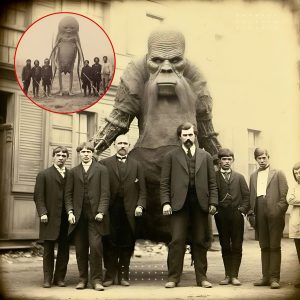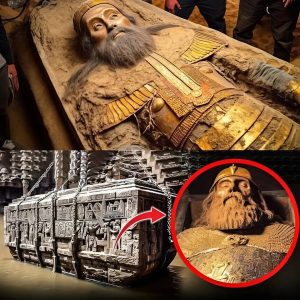Archaeological discoveries have always played a pivotal role in understanding the past, offering glimpses into ancient civilizations, their beliefs, and their everyday lives. However, every once in a while, a discovery is made that challenges everything we think we know about history. One such recent finding has sent shockwaves through the archaeological community: the discovery of winged tiny human skeletons in the basement of an ancient house in London. This mysterious and shocking find has sparked intense speculation, debate, and excitement among archaeologists and researchers, who are eager to uncover the truth behind these strange skeletal remains.
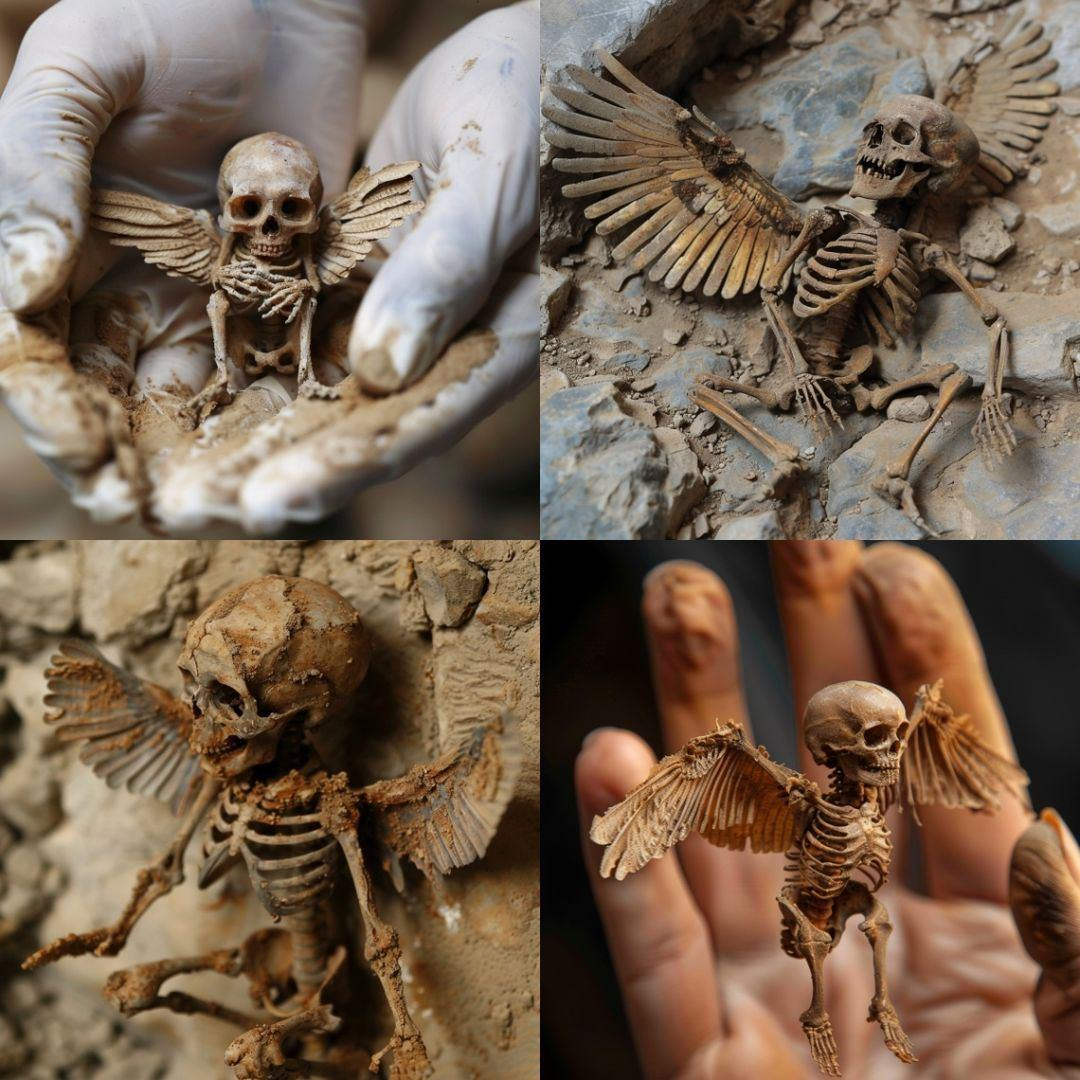
The Initial Discovery: A Basement Full of Secrets
The story begins with the restoration of a centuries-old house in London. This particular building, located in one of the city’s oldest neighborhoods, had long been abandoned and was set for renovation. As workers began to dig into the house’s basement to assess its structural integrity, they stumbled upon something unexpected: a hidden chamber buried deep within the foundation.
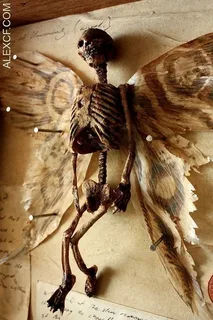
Inside this chamber, archaeologists found what appeared to be the remains of several tiny human-like skeletons, each one possessing a unique and astonishing feature—delicate, wing-like structures protruding from their backs. These skeletons, measuring just a few inches in height, were found in various states of preservation, some nearly intact and others partially decomposed. The discovery of these tiny, winged skeletons left everyone involved both baffled and intrigued.
The Mystery of the Winged Skeletons
The small, human-like skeletons are unlike anything archaeologists have ever encountered. The skeletal structures bear many similarities to that of a human, with recognizable skulls, ribcages, and limbs. However, the wings—comprised of what appears to be thin, delicate bones—are a feature that has never been documented in any known human or animal species.
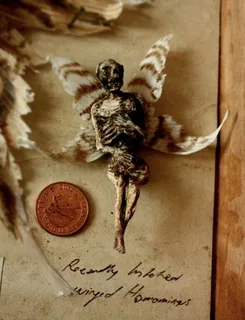
Experts are left pondering the origins of these mysterious creatures. Could they be some form of genetic anomaly, or are they simply an elaborate hoax designed to deceive? The appearance of wings has sparked wild speculation about their possible connection to ancient folklore, where winged beings such as fairies, angels, and mythical creatures were believed to exist.
Theories and Speculations: Folklore, Myth, or Reality?
One of the most compelling aspects of this discovery is the connection it seems to have to long-standing myths and legends surrounding winged beings. Throughout history, nearly every culture has tales of creatures that resemble the winged skeletons found in the London basement. Fairies, in particular, have been a staple of folklore across Europe for centuries, with stories describing them as small, human-like beings with the ability to fly.
Could the winged skeletons be evidence of these legendary creatures, long thought to exist only in fairy tales? Some researchers are open to the idea that these skeletons could represent an unknown species that inspired the folklore of fairies and other winged entities. If that is the case, it would be one of the most groundbreaking discoveries in the history of archaeology, offering a tangible connection between myth and reality.
On the other hand, many skeptics caution against jumping to conclusions. They argue that the skeletons could be a deliberate hoax, crafted by someone in the past to capitalize on the belief in supernatural beings. London, particularly during the Victorian era, was a hotbed for both scientific discovery and fascination with the supernatural. It’s possible that the winged skeletons were planted as part of an elaborate Victorian-era prank, meant to perpetuate myths of fairies and other magical creatures.
Scientific Investigation: Unraveling the Mystery
To determine the authenticity of the winged skeletons, a rigorous scientific investigation is currently underway. Forensic anthropologists, biologists, and archaeologists have all been called upon to study the remains in detail. Initial analysis of the bones suggests that they are, indeed, quite old—likely dating back several centuries. However, without further carbon dating, it is difficult to determine an exact timeline for when these skeletons were buried.
One of the primary goals of the investigation is to determine whether the winged skeletons are of natural or artificial origin. To do so, researchers are conducting DNA analysis to ascertain if the remains belong to any known species. If the DNA matches human, it could suggest that these skeletons are a bizarre genetic mutation, while a match with another species could point to a previously unknown group of creatures.
Additionally, the wings themselves are being closely examined. While they bear a superficial resemblance to bird or insect wings, no direct comparisons have been made yet. If the bones used to create the wings come from a different organism, it could suggest that someone altered the skeletons to give the illusion of a winged being.
The Archaeological Context: What the Basement Tells Us
One of the most intriguing aspects of this discovery is its location. The house where the skeletons were found dates back several centuries, and historical records suggest it was owned by a wealthy family during the Victorian period. The Victorian era was a time of great interest in both science and the supernatural, with the public fascination with ghosts, fairies, and unexplained phenomena reaching its peak. This gives rise to the theory that the skeletons could have been part of a collection or private exhibit meant to entertain or deceive.
Further excavation of the basement and surrounding areas may offer more clues about why these skeletons were hidden there. Archaeologists are looking for any artifacts or relics that could provide context—such as tools, written documents, or objects associated with the skeletons. Additionally, they are investigating the possibility of other hidden chambers or burial sites that may contain more remains or evidence of who placed these skeletons in the basement.
Historical Context: The Victorian Fascination with Fairies
The discovery of the winged skeletons comes at a time when researchers are increasingly interested in the historical fascination with fairies and supernatural creatures, particularly during the Victorian era. During this period, many people believed in the existence of fairies, and numerous fairy sightings were reported across the United Kingdom. These sightings often involved small, winged creatures seen in forests, gardens, or other natural areas.
The fascination with fairies and similar creatures was fueled by popular literature, including stories by authors like J.M. Barrie and Sir Arthur Conan Doyle. In fact, Conan Doyle, the creator of Sherlock Holmes, famously defended the authenticity of the “Cottingley Fairies” photographs, which purported to show real-life fairies interacting with young girls. While the Cottingley Fairies were later revealed to be a hoax, the incident illustrates the extent to which belief in supernatural beings permeated Victorian society.
Given this historical context, it’s not difficult to imagine that someone in the Victorian era might have created the winged skeletons as part of an elaborate display or collection. However, until more evidence is uncovered, the true nature of the discovery remains uncertain.
What This Discovery Could Mean for Archaeology
Whether the winged skeletons turn out to be a hoax or a genuine archaeological anomaly, their discovery has profound implications for the field of archaeology. It challenges researchers to think more critically about how they interpret unusual findings and encourages a deeper exploration of the intersection between history, folklore, and science.
If the skeletons are proven to be authentic and not artificially altered, it could lead to a re-examination of ancient myths and the possibility that some legends were based on real, albeit misunderstood, phenomena. On the other hand, if the skeletons are a hoax, it provides a fascinating glimpse into the human desire to believe in the extraordinary and the lengths to which people will go to make the supernatural seem real.
The Ongoing Investigation
As the scientific investigation continues, the world waits with bated breath for answers to the mystery of the winged tiny human skeletons discovered in the ancient London house basement. Whether they represent a groundbreaking discovery or a carefully crafted hoax, these skeletons have captured the public imagination and opened the door to a wealth of possibilities about the relationship between history, folklore, and archaeology.
Until the results of DNA testing and other forensic analyses are revealed, the mystery will endure. One thing is certain: the discovery of these winged skeletons has provided a rare opportunity to explore the fascinating ways in which history, myth, and science intersect, offering valuable lessons for archaeologists and historians alike.
